
Bombay Hook National Wildlife Refuge: A Sanctuary for Nature Enthusiasts
Discover Bombay Hook National Wildlife Refuge in Delaware, a 16,000-acre sanctuary offering birdwatching, photography, and nature trails amidst diverse habitats.
Nestled along the Delaware Bay, the Bombay Hook National Wildlife Refuge is a haven for bird watchers, photographers, and nature lovers. Spanning over 16,000 acres, this refuge offers a diverse landscape featuring tidal salt marshes, freshwater impoundments, woodlands, and grassy fields. Its unique habitats make it a prime location for observing a wide array of wildlife, including migratory birds, deer, foxes, and even the occasional bald eagle. The refuge is particularly famous for its birdwatching opportunities. Each season brings a different set of species, making it a year-round destination for avid birders. In the spring and fall, thousands of shorebirds stop by during their migrations, while summer brings nesting herons, egrets, and songbirds. Winter is the time to see snow geese and other waterfowl in large numbers. Visitors can explore the refuge through a series of well-maintained trails and a scenic 12-mile auto tour route. These paths provide access to observation towers and platforms, offering stunning views of the landscape and its inhabitants. Don't forget to bring your binoculars and camera to capture the breathtaking moments you'll experience along the way.
Local tips in Bombay Hook National Wildlife Refuge
- Visit early in the morning or late in the afternoon for the best wildlife viewing opportunities.
- Bring insect repellent, especially during the summer months, to ward off mosquitoes.
- Pack a picnic and enjoy your meal at designated areas within the refuge.
- Check the refuge’s event calendar for guided tours and educational programs.
- Wear comfortable walking shoes as some trails can be muddy or uneven.
Bombay Hook National Wildlife Refuge: A Sanctuary for Nature Enthusiasts
Nestled along the Delaware Bay, the Bombay Hook National Wildlife Refuge is a haven for bird watchers, photographers, and nature lovers. Spanning over 16,000 acres, this refuge offers a diverse landscape featuring tidal salt marshes, freshwater impoundments, woodlands, and grassy fields. Its unique habitats make it a prime location for observing a wide array of wildlife, including migratory birds, deer, foxes, and even the occasional bald eagle. The refuge is particularly famous for its birdwatching opportunities. Each season brings a different set of species, making it a year-round destination for avid birders. In the spring and fall, thousands of shorebirds stop by during their migrations, while summer brings nesting herons, egrets, and songbirds. Winter is the time to see snow geese and other waterfowl in large numbers. Visitors can explore the refuge through a series of well-maintained trails and a scenic 12-mile auto tour route. These paths provide access to observation towers and platforms, offering stunning views of the landscape and its inhabitants. Don't forget to bring your binoculars and camera to capture the breathtaking moments you'll experience along the way.
When is the best time to go to Bombay Hook National Wildlife Refuge?
Iconic landmarks you can’t miss
Prime Hook National Wildlife Refuge
Discover the serene landscapes and diverse wildlife at Prime Hook National Wildlife Refuge, a perfect getaway for nature lovers and birdwatching enthusiasts.

Bombay Hook National Wildlife Refuge Visitor Center
Discover the natural wonders at Bombay Hook National Wildlife Refuge Visitor Center, where wildlife thrives and nature beckons.

Unmissable attractions to see
Cape Henlopen State Park
Explore Cape Henlopen State Park, where stunning beaches, hiking trails, and rich wildlife await in Delaware's breathtaking natural landscape.

Dover Motor Speedway
Experience the thrill of high-speed racing at Dover Motor Speedway, the iconic track known for its adrenaline-pumping events and vibrant atmosphere.

Air Mobility Command Museum
Discover the legacy of air mobility at the Air Mobility Command Museum, where history meets innovation in aviation.
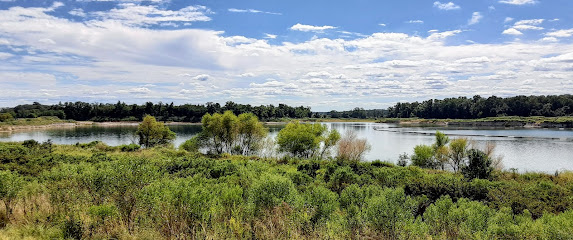
Brecknock County Park
Discover the tranquility and beauty of Brecknock County Park, Delaware's ultimate destination for outdoor enthusiasts and nature lovers.

Prime Hook National Wildlife Refuge
Explore the breathtaking landscapes and diverse wildlife of Prime Hook National Wildlife Refuge, a stunning nature preserve in Delaware.

Big Oak County Park
Discover the beauty and tranquility of Big Oak County Park in Smyrna, Delaware, a perfect escape for nature lovers and families.

Bombay Hook National Wildlife Refuge Visitor Center
Experience the natural beauty and biodiversity of Bombay Hook National Wildlife Refuge, a must-visit destination for wildlife enthusiasts and nature lovers.

Woodland beach
Experience the serene beauty of Woodland Beach in Smyrna, Delaware, where sandy shores and stunning sunsets await your discovery.

Biggs Museum of American Art
Discover the Biggs Museum of American Art in Dover, DE, where American art comes to life through diverse collections and engaging exhibitions.

Delaware Agricultural Museum
Explore Delaware's agricultural heritage through engaging exhibits and charming historical recreations at the Delaware Agricultural Museum in Dover.

Tidbury Park
Explore Tidbury Park in Dover, DE—a tranquil retreat featuring lush landscapes, scenic trails, and perfect picnic spots for family fun.

John Dickinson Plantation
Explore the John Dickinson Plantation, a historic site in Dover, Delaware, showcasing the life of a Founding Father and the era of American independence.
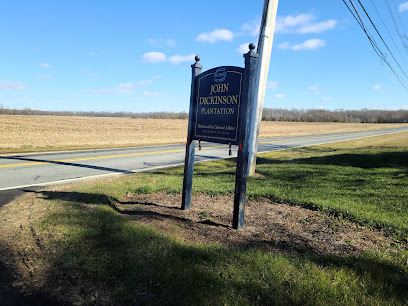
DuPont Nature Center
Explore the DuPont Nature Center, Delaware's serene nature preserve offering wildlife observation, interactive exhibits, and stunning views of the Delaware Bay.

Little Creek Wildlife Area
Discover the natural beauty and tranquility of Little Creek Wildlife Area in Dover, Delaware, a perfect getaway for nature lovers and outdoor adventurers.

The Green
Discover the beauty and history of The Green in Dover, a serene park perfect for relaxation, recreation, and cultural exploration.

Essential places to dine
Bertucci's Italian Restaurant
Experience authentic Italian cuisine at Bertucci's Italian Restaurant in Newark – where every meal is a celebration of flavor.

Bahama Breeze
Discover Bahama Breeze in Newark: A Caribbean dining experience filled with vibrant flavors and tropical drinks perfect for every occasion.

MISSION BBQ
Experience mouthwatering barbecue at MISSION BBQ in Dover - where delicious flavors meet patriotic spirit.

Bob Evans
Experience family-friendly dining at Bob Evans in Newark DE with hearty breakfasts & comforting meals perfect for all ages.

Bombay Hook National Wildlife Refuge
Explore the breathtaking landscapes and diverse wildlife at Bombay Hook National Wildlife Refuge in Delaware – a paradise for nature lovers.

Prime Hook National Wildlife Refuge
Discover diverse ecosystems at Prime Hook National Wildlife Refuge—Delaware's premier destination for wildlife enthusiasts and nature lovers.

Bombay Hook National Wildlife Refuge Visitor Center
Explore the breathtaking beauty of Bombay Hook National Wildlife Refuge - a haven for wildlife enthusiasts in Delaware.

Markets, malls and hidden boutiques
Dover Mall
Discover the ultimate shopping experience at Dover Mall, where retail therapy meets delightful dining and family fun in the heart of Delaware.

Best Buy
Discover the latest electronics and gadgets at Best Buy in Dover, Delaware, your ultimate destination for all things tech and home entertainment.
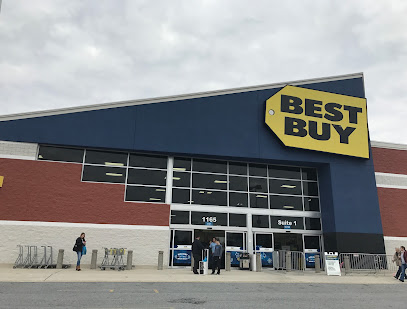
Michaels
Explore your creative side at Michaels in Dover, the ultimate destination for all your crafting, art supply, and party needs.

Bombay Hook National Wildlife Refuge
Explore the breathtaking landscapes and diverse wildlife at Bombay Hook National Wildlife Refuge in Smyrna, Delaware.

Prime Hook National Wildlife Refuge
Immerse yourself in the natural beauty and diverse wildlife of Prime Hook National Wildlife Refuge, a serene escape in Delaware's coastal landscape.

Target
Explore Target in Dover, DE for a diverse selection of products from clothing to electronics, all in a family-friendly shopping environment.

Bombay Hook National Wildlife Refuge Visitor Center
Experience the serene beauty of Bombay Hook National Wildlife Refuge, a haven for wildlife enthusiasts and nature lovers in Delaware.

DICK'S Sporting Goods
DICK'S Sporting Goods in Dover: Your ultimate destination for sports gear, apparel, and outdoor adventure essentials.

Plato's Closet Dover
Explore a diverse selection of trendy second-hand clothing and accessories at Plato's Closet Dover, your go-to destination for sustainable fashion.

The Right Bottle
Discover an extensive selection of wines, spirits, and craft beers at The Right Bottle in Smyrna, Delaware - a must-visit for beverage enthusiasts.

A & H Uniforms
Discover A & H Uniforms in Dover, DE for high-quality workwear tailored for professionals across various industries.

Bob Johnson's Computer Stuff Inc.
Discover top-notch computers and accessories at Bob Johnson's Computer Stuff Inc., a tech treasure in Smyrna, Delaware.

Safari Zone Collectibles
Explore Safari Zone Collectibles in Smyrna, Delaware, where rare treasures and unique Japanese memorabilia await every collector and tourist.

The Farm Dispensary- Felton
Discover The Farm Dispensary in Felton, Delaware, your premier destination for quality cannabis products and exceptional service.

Jeweler's Loupe
Discover exquisite jewelry and personalized service at Jeweler's Loupe in Dover, Delaware - a destination for those seeking elegance and luxury.
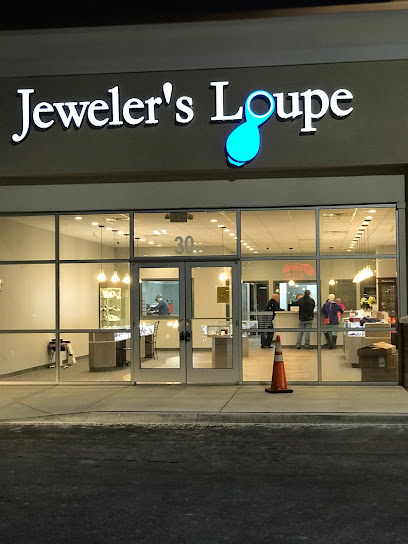
Essential bars & hidden hideouts
LongHorn Steakhouse
Experience the best of American steakhouse dining at LongHorn Steakhouse in Dover, where flavor and quality meet a welcoming atmosphere.

Applebee's Grill + Bar
Discover Applebee's Grill + Bar in Dover, where delicious American cuisine meets a welcoming atmosphere perfect for family and friends.

McGlynns Pub - Dover
Discover McGlynns Pub in Dover, where authentic pub culture meets delicious cuisine and a warm, inviting atmosphere.

The Greene Turtle Sports Bar & Grille
Experience the ultimate sports dining at The Greene Turtle Sports Bar & Grille in Dover, where great food and sports excitement meet.

TGI Fridays
Experience the vibrant atmosphere of TGI Fridays, where delicious American food and a lively sports bar ambiance come together in Dover, Delaware.

Restaurant 55
Experience the vibrant atmosphere and delectable burgers at Restaurant 55, a must-visit bar and eatery in Dover, Delaware.

JP's on the Wharf
Savor fresh seafood delights at JP's on the Wharf, a charming waterfront restaurant offering a unique dining experience in Frederica, Delaware.

Brick Works Brewing and Eats - Smyrna
Experience the best of craft beer and delicious food at Brick Works Brewing and Eats in Smyrna, Delaware, where local flavors come to life.

Fraizer's
Experience the best of American cuisine at Fraizer's in Dover, DE, where local flavors and a warm atmosphere come together for an unforgettable dining experience.

Grey Fox Grille and Public House
Discover delicious American cuisine in a vibrant pub atmosphere at Grey Fox Grille and Public House in Dover, DE.

Boondocks Restaurant & Package Store
Discover the best seafood experience in Smyrna, Delaware, at Boondocks Restaurant & Package Store, where fresh flavors meet coastal charm.

Sambo's Tavern
Experience the best seafood and crab dishes at Sambo's Tavern in Leipsic, Delaware, where fresh flavors meet cozy atmosphere.

Crab Du Jour Cajun Seafood & Bar
Experience the vibrant flavors of Cajun seafood at Crab Du Jour, where every dish is a celebration of coastal culinary heritage.

The Celtic Pub
Discover The Celtic Pub in Smyrna, DE - your gateway to authentic Irish cuisine, lively music, and a welcoming atmosphere.
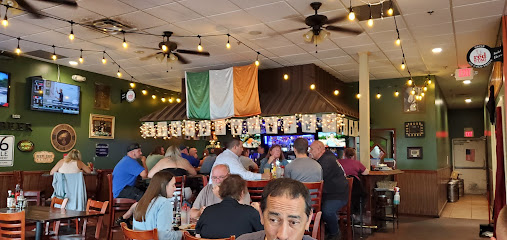
Sheridans Irish Pub
Discover authentic Irish cuisine, live music, and a welcoming atmosphere at Sheridans Irish Pub in Smyrna, Delaware.

Local Phrases about Bombay Hook National Wildlife Refuge
-
- Helloनमस्कार
[namaskār] - Goodbyeअलविदा
[alvidā] - Yesहो
[ho] - Noनाही
[nāhī] - Please/You're welcomeकृपया
[krupayā] - Thank youधन्यवाद
[dhanyavād] - Excuse me/Sorryक्षमा करा
[kṣamā karā] - How are you?तुम्ही कसे आहात?
[tumhī kase āhāt?] - Fine. And you?ठीक आहे. आणि तुम्ही?
[ṭhīk āhe. āṇi tumhī?] - Do you speak English?तुम्हाला इंग्रजी येते का?
[tumhālā iṅgrajī yete kā?] - I don't understandमला समजत नाही
[malā samjat nāhī]
- Helloनमस्कार
-
- I'd like to see the menu, pleaseकृपया मेनू पहा
[krupayā menū pahā] - I don't eat meatमाझ्याला मांस वाचवू नकोस
[mājhyālā māns vācavū nakos] - Cheers!उत्क्रांती!
[utkrāntī] - I would like to pay, pleaseकृपया मी करू इच्छितो
[krupayā mī karū ichchito]
- I'd like to see the menu, pleaseकृपया मेनू पहा
-
- Help!मदत!
[madat!] - Go away!ओळख दूर!
[ōḷakh dūr!] - Call the Police!पोलिसांना कॉल करा!
[polisānnā kŏl karā!] - Call a doctor!डॉक्टरांना कॉल करा!
[ḍŏkṭarānnā kŏl karā!] - I'm lostमी हरलो आहे
[mī harlō āhe] - I'm illमला आजार आहे
[malā ājār āhe]
- Help!मदत!
-
- I'd like to buy...मला विकत घेणे आहे...
[malā vikat gheṇē āhē...] - I'm just lookingमी फक्त शोधत आहे
[mī fakt śōdhat āhe] - How much is it?त्याची किती किंमत आहे?
[tyāchī kitī kimat āhe?] - That's too expensiveतेव्हा खूप महाग आहे
[tēvhā khūp mahāg āhe] - Can you lower the price?तुम्हाला किंमत कमी करावी लागेल का?
[tumhālā kimat kamī karāvī lāgēl kā?]
- I'd like to buy...मला विकत घेणे आहे...
-
- What time is it?वेळ किती झाली आहे?
[vēḷ kitī jhālī āhē?] - It's one o'clockएक वाजले आहे
[ēk vājlē āhē] - Half past (10)दहा वाजले
[dahā vājlē] - Morningसकाळ
[sakāḷ] - Afternoonदुपार
[dupār] - Eveningसंध्याकाळ
[sandhyākāḷ] - Yesterdayकाल
[kāl] - Todayआज
[āj] - Tomorrowउद्या
[udyā] - 1एक
[ēk] - 2दोन
[dōn] - 3तीन
[tīn] - 4चार
[chār] - 5पाच
[pāc] - 6सहा
[sahā] - 7सात
[sāt] - 8आठ
[āṭh] - 9नऊ
[naū] - 10दहा
[dahā]
- What time is it?वेळ किती झाली आहे?
-
- Where's a/the...?...आहे कुठे?
[...āhē kuthē?] - What's the address?पत्ता काय आहे?
[pattā kāy āhē?] - Can you show me (on the map)?तुम्ही मला दाखवू शकता का (नक्काशावर)?
[tumhī malā dākhavū śaktā kā (nakkāśāvar)?] - When's the next (bus)?पुढच्या (बस) आणि किती वाजता येईल?
[puḍhacyā (bas) āṇi kitī vājatā yē'īla?] - A ticket (to ....)एक टिकट (ते ....)
[ēk ṭikaṭ (tē ....)]
- Where's a/the...?...आहे कुठे?
History of Bombay Hook National Wildlife Refuge
-
Long before European settlers arrived, the area now known as Bombay Hook was inhabited by Native American tribes, including the Lenape. They utilized the rich marshlands for fishing, hunting, and gathering plants. Evidence of their presence can still be found in artifacts and burial sites discovered in the refuge.
-
In the 1600s, European settlers, primarily from the Netherlands and Sweden, began to explore and settle in the Delaware Bay area. They established small communities and began to alter the landscape for agriculture and trade. The name 'Bombay Hook' is derived from the Dutch ‘Bompies Hoeck,’ meaning 'Little-tree Point,' indicating the presence of small trees or shrubs in the area.
-
During the Colonial Era, the marshlands of Bombay Hook were used for farming and grazing livestock. The land was also significant during the American Revolution, serving as a strategic location for both the British and American forces. The area’s waterways provided critical routes for the movement of troops and supplies.
-
Bombay Hook National Wildlife Refuge was established in 1937 as part of President Franklin D. Roosevelt’s New Deal programs. The primary goal was to provide a sanctuary for migratory birds along the Atlantic Flyway. The Civilian Conservation Corps (CCC) played a significant role in developing the refuge’s infrastructure, including dikes, impoundments, and roads.
-
During World War II, the refuge's location along the Delaware Bay made it a site of strategic importance. The U.S. military used portions of the refuge for training exercises and as a lookout for potential enemy submarines. Post-war, the focus returned to wildlife conservation, with efforts to restore and maintain the habitat for various species.
-
Throughout the latter half of the 20th century and into the 21st century, Bombay Hook has become a model for environmental conservation and education. Numerous projects have been undertaken to preserve the delicate ecosystems, including marsh restoration and invasive species control. The refuge also serves as an educational hub, offering programs and tours to teach visitors about the importance of wildlife conservation.
-
Today, Bombay Hook National Wildlife Refuge is recognized not only for its historical significance but also as a crucial habitat for a diverse array of wildlife. It is particularly known for its birdwatching opportunities, attracting enthusiasts from around the world. The refuge continues to play a vital role in the conservation efforts along the Atlantic Flyway, ensuring that future generations can enjoy its natural beauty and historical richness.
Bombay Hook National Wildlife Refuge Essentials
-
Bombay Hook National Wildlife Refuge is located in Smyrna, Delaware. The nearest major airport is Philadelphia International Airport (PHL), approximately 75 miles away. From the airport, you can rent a car and drive to the refuge, which takes around 1.5 hours. Alternatively, you can take a train or bus to Wilmington, Delaware, and then rent a car or take a taxi to the refuge, which is about a 40-minute drive.
-
The best way to explore Bombay Hook National Wildlife Refuge is by car. There are no public transportation options that directly service the refuge, so renting a car is highly recommended. Within the refuge, there are well-maintained roads and parking areas at key points of interest. Biking is also a popular way to explore the refuge, and there are several trails suitable for cyclists.
-
The official currency in the United States is the U.S. Dollar (USD). Credit and debit cards are widely accepted, but it is advisable to carry some cash for small purchases, especially if you plan to visit nearby small towns or local vendors. ATMs are available in Smyrna and other nearby towns.
-
Bombay Hook National Wildlife Refuge is generally very safe for tourists. There are no specific high-crime areas targeting tourists within the refuge. However, it is always wise to take standard precautions: keep your belongings secure, lock your car, and avoid isolated areas at night. Be cautious of wildlife and adhere to all safety guidelines provided by the refuge.
-
In case of emergency, dial 911 for immediate assistance. The nearest hospital is Bayhealth Hospital in Dover, Delaware, about a 30-minute drive from the refuge. For minor health issues, there are pharmacies in Smyrna and Dover. It is recommended to have travel insurance that covers medical emergencies.
-
Fashion: Do wear comfortable, weather-appropriate clothing and sturdy shoes, as you will be walking on trails and potentially uneven terrain. Avoid wearing strong perfumes, as they can attract insects. Religion: There are no specific religious customs to be aware of in the refuge. Public Transport: There is no public transport within the refuge; rely on private vehicles or bikes. Greetings: Standard American greetings such as a handshake or a friendly wave are appropriate. Eating & Drinking: Do bring your own food and water, as there are no dining facilities within the refuge. Do not litter; use designated trash bins.
-
To experience Bombay Hook National Wildlife Refuge like a local, consider visiting early in the morning or late in the afternoon when wildlife is most active. Bring binoculars and a camera to capture the abundant birdlife and scenic landscapes. Check the refuge's schedule for guided tours and special programs that can enrich your visit. Lastly, stop by the visitor center for maps, brochures, and advice from the knowledgeable staff.
Nearby Cities to Bombay Hook National Wildlife Refuge
-
Things To Do in Lewes
-
Things To Do in Wildwood
-
Things To Do in Rehoboth Beach
-
Things To Do in Philadelphia
-
Things To Do in Bethany Beach
-
Things To Do in Atlantic City
-
Things To Do in Annapolis
-
Things To Do in Baltimore
-
Things To Do in Towson
-
Things To Do in Salisbury
-
Things To Do in Ocean City
-
Things To Do in Lancaster
-
Things To Do in Laurel
-
Things To Do in Trenton
-
Things To Do in Reading





